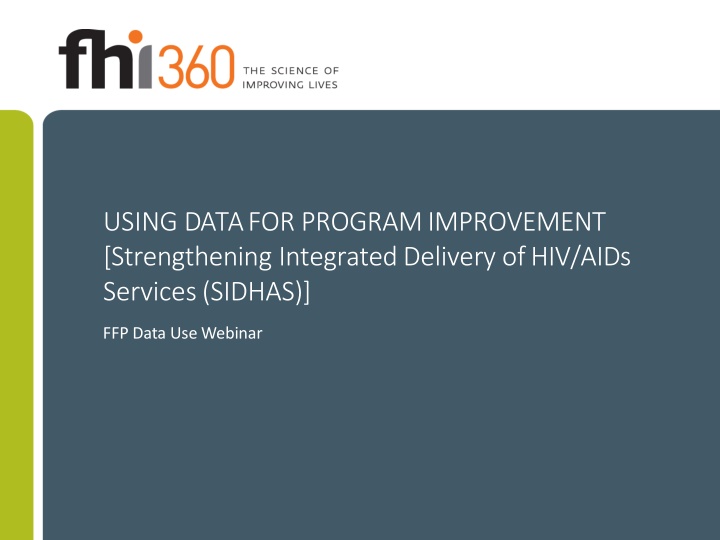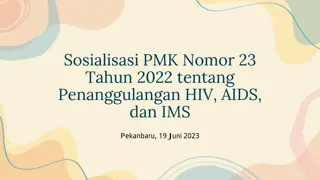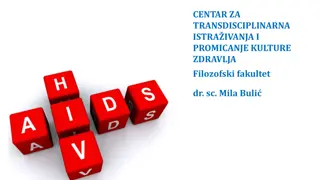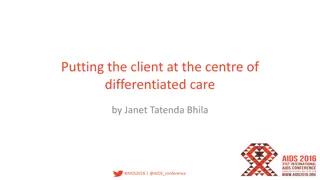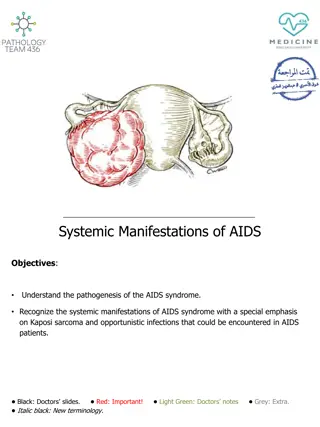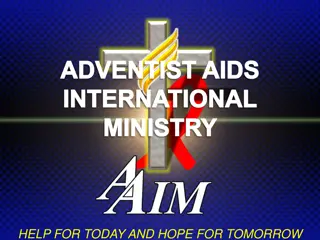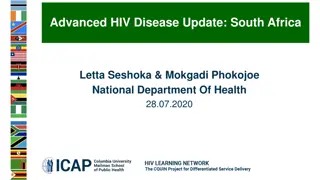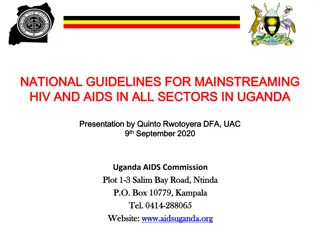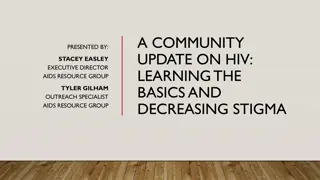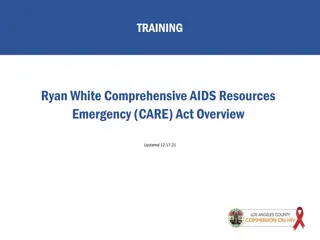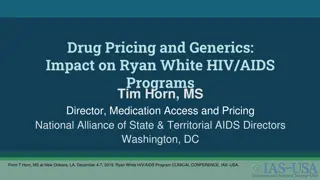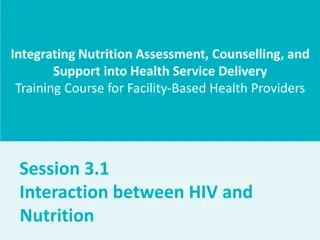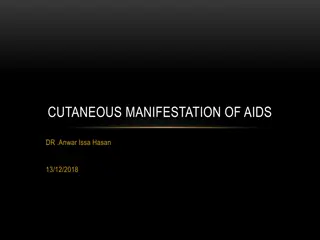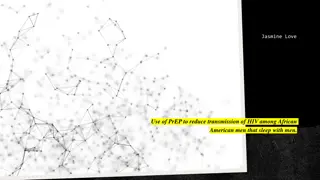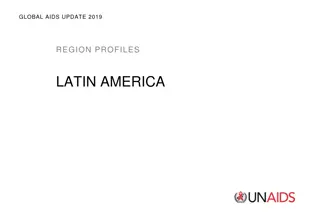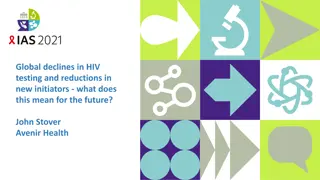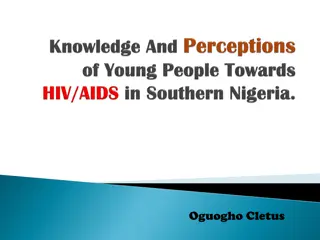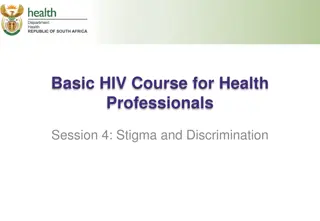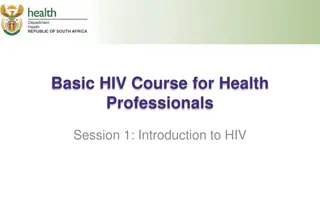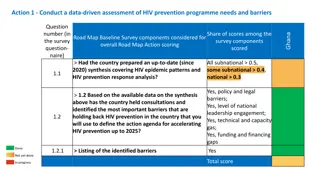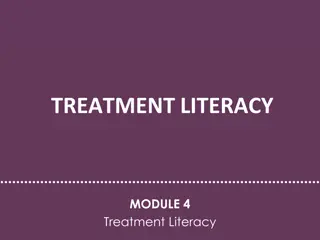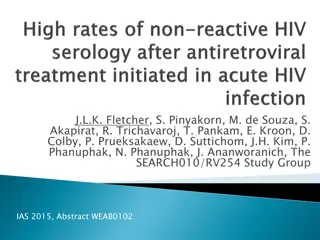Strengthening Integrated Delivery of HIV/AIDS Services: Data Use for Improvement
Strengthening Integrated Delivery of HIV/AIDS Services (SIDHAS) is a PEPFAR-funded project in Nigeria aimed at building local capacity for sustainable HIV/AIDS services. Data is utilized through various meetings and tools for program enhancement with scenarios like closing gaps in ARV prophylaxis uptake.
Download Presentation

Please find below an Image/Link to download the presentation.
The content on the website is provided AS IS for your information and personal use only. It may not be sold, licensed, or shared on other websites without obtaining consent from the author.If you encounter any issues during the download, it is possible that the publisher has removed the file from their server.
You are allowed to download the files provided on this website for personal or commercial use, subject to the condition that they are used lawfully. All files are the property of their respective owners.
The content on the website is provided AS IS for your information and personal use only. It may not be sold, licensed, or shared on other websites without obtaining consent from the author.
E N D
Presentation Transcript
USING DATA FOR PROGRAM IMPROVEMENT [Strengthening Integrated Delivery of HIV/AIDs Services (SIDHAS)] FFP Data UseWebinar
Background Strengthening Integrated Delivery of HIV/AIDS Services (SIDHAS) is a seven- year PEPFAR funded project designed to build local capacity for the delivery of sustainable, high-quality, integrated comprehensive HIV/AIDS prevention, treatment and care services SIDHAS is implemented in collaboration with Government of Nigeria (GoN) HIV State Management Teams in 13 states SIDHAS currently being implemented through 368 Comprehensive ART sites, 381 PMTCT standalone sites and 32 Community Based Organizations
How is data used on the SIDHAS project for program improvement? Internal Data Review Meetings, Quarterly Programme Review, State HIV Bulletins, Factsheets Data Review Meetings, Health ManagementTeam Meetings, Continuous Quality Improvement Runs Charts HIV Service providers, Medical Records Officers, Facility Managementteam Technical Team Meeting, Programme Performance Review Meetings, Inside NigeriaBlog SIDHAS technical team, Senior Management, State Programme Managers, SIDHAS consortium partners DHIS, Excel Charts, Power point, Power BI, Inside Nigeria Blog Weekly, Monthly Sub-Nationallevel SIDHAS Country Office ImplementingAgency SIDHAS Implementation Team, Stakeholders at state and local government levels DHIS, Excel Charts, Power point, bulletins Excel Charts, PPT, Runs Charts , Cardboards Monthly Monthly,Quarterly
Closing the gap in ARV prophylaxis uptake in Federal Medical Centre (FMC) Yenagoa FMC Yenogoa is a Comprehensive ART site in Yenagoa, Bayelsa state First quarter, FY 13, a significant gap in the uptake of ARV prophylaxis for PMTCT was observed <60% of HIV positive pregnant women identified in the quarter were provided with a form of prophylaxis forPMTCT Presenting the data using standard PMTCT cascade charts to the facility management during the Health Management Team Meeting, resulted in the facility conducting an inquiry and developing strategies to close the gap. Increasing CD4 testing days Locating an annex of the pharmacy in the O&G unit on ANCdays
ARV Prophylaxis Uptake in FMC Yenagoa- FY 13 83% 65% 93%
Making the case for the community ART strategy Excerpts from SIDHAS Weekly Technical ReviewMeetings Nigeria has identified 12 states plus the FCT (12+1 priority states) which account for 70% of the HIV/AIDS burden in Nigeria for increased HIV/AIDSfocus. FHI 360 through SIDHAS is lead IP in 8 of these states. PEPFAR identified 8 states (constituting more than 50% of the National need according to the UN spectrum data) where she will support scale-up of treatment and PMTCT services. PEPFAR has also adopted a tiered approach to supporting ART & PMTCT services in Nigeria; FHI 360 is supporting PEPFAR plans to increase clients current on treatment by 50% in tier I states and 15% in tier II at the end of FY 15 As a result ambitious for Treatment & PMTCT targets were assigned in FY 15
The challenge - SIDHAS performance at Month 5, FY 15 Pregnant women receiving ARV prophylaxis forPMTCT FY 15 Achievem ent to date Pregnant womenwith known HIV status FY 15 Achievem ent to date Newly started onART FY 15 Achievem ent to date States FY 15 Target FY 15 Target FY 15 Target % % % Akwa Ibom 14,141 2,291 16% 57,615 19,244 33% 4,644 1,221 26% Cross River 5,611 1,197 21% 100,464 18,021 18% 3,676 486 13% Lagos 8,772 1,181 14% 102,54230,049 29% 2,571 517 20% Rivers 3,936 1,197 30% 109,11114,957 14% 2,834 601 21%
TX_New Projections- maintaining currentrate Maintaincurrent rate Deficits stillexist 1,197 1,676 3,129 Rivers 1,181 1,653 5,937 Lagos 1,197 1,676 5,752 CrossRiver 2,291 3,207 8,643 AkwaIbom 90% 100% 0% 10% 20% 30% 40% 50% 60% 70% 80% Deficit Achieved in 1st 5 months of FY15 End of FY 15 at currentrate
TX_New Projections- optimizing facility level performance Additional Innovations Needed ???? IncreasedEfficiencies Rivers 1,197 3,658 1,147 Lagos 1181 5,626 1,964 Cross River 1197 4,320 3,107 Akwa Ibom 2291 6,391 5,459 20% 40% 60% 80% 0% 100% At current rate With additional bump from 80% PITC and demand creation over 5 months Deficit
Proposed strategy Community Facility - Increased Efficiency Target Met Expanded outreaches to normalize HIV testingin community settings e.g. TBAs, riverineareas Routine testing of allclients Escort Services to close cascade gap Conduct community HIV testing, CD4 analysis, ART initiation Transition all initiated clients to the nearest site (Hub/spoke) within 3 months Scale up Nurse led initiation in high burdensites Weekly cascadeanalysis
Population based surveys support community strategies Comprehensive knowledge of HIV is less than 30% Over 60% of persons never tested for HIV Only 56% reported home delivery (54.7% of pregnant women would not go to HF due to Poor attitude of health workers (NDHS, 2013) Poor Knowledge among TBAs on issues relating to reproductive health, STIs and HIV/AIDS Fear of disclosure, persistent HIV/AIDS related stigma and discrimination(NACA 2010) Strong misconception such as witchcraft
Making efficient use of resources Where do we implement the community ART strategy? HIV Burden 16,069 9,930 21,398 27,489 16,797 12,169 26,741 11,546 Levelof effort State ak Akwa-IbomState ak Oron Local GovernmentArea ak Akwa-IbomState ak Esit Eket Local Government Area ri RiversState ri Ahoada East Local GovernmentArea ri RiversState ri Bonny Local GovernmentArea ak Akwa-IbomState ak Ikot Ekpene Local GovernmentArea ak Akwa-IbomState ak Okobo Local GovernmentArea ri RiversState ri Gokana Local GovernmentArea ak Akwa-IbomState ak Mbo Local GovernmentArea ak Eastern Obolo Local Government Area cr Cross RiverState cr Ikom Local GovernmentArea cr Cross RiverState cr Akamkpa Local GovernmentArea cr Cross RiverState cr Obudu Local GovernmentArea ak Akwa-IbomState ak Obot Akara Local GovernmentArea cr Cross RiverState cr Akpabuyo Local Government Area ri RiversState ri Andoni Local GovernmentArea la Lagos State la Agege Local GovernmentArea *positivity based on programme data **level of effort refers to the number of persons to test in order to identify one positive Local Government Area Positivity Population 18.4 15.7 12.9 12.8 11.9 11.8 11.4 11.3 87,209 63,358 166,324 214,983 141,408 102,753 233,813 102,173 5 6 8 8 8 8 9 9 ak Akwa-IbomState 3.5 3.3 3.3 3.2 3.2 3.1 3.0 2.5 59,970 163,691 149,705 161,457 147,286 272,262 217,924 461,743 2,110 5,466 4,906 5,171 4,686 8,369 6,573 11,734 28 30 31 31 31 33 33 39
SIDHAS priority states LGA HIV burden and LGAs for community ARTintervention Akwa-Ibom Cross River
In Scale-up LGAs, where do we concentrate community outreach activities for greater efficiency? Improvements in Testing Efficiency in Obio/AkporLGA GIS mapping to identify community hotspots for targeted communitytesting
Adamawa security update May2015 Feb2016
What facilitates data use in SIDHAS? Internal Systems/Processes that demand data, at all levels of the project Country Office Senior Management Country Office state support team, both technical and programmes State Programme Managers Site owners Simple, Easy to Use Tools for Data Analysis DHIS 2 data visualizer, dashboards At Primary Healthcare Centers (PHCs)- using cardboards to display performance charts Capacity Building for data analysis Data analysis module included in the M&E training for site level and sub national level M&E Officers Periodic internal capacity building events for internal technical & programme staff (Supportive Supervisory Visits)
What challenges exist ? Low Human Resource capacity- particularly at primary health care level PHCs constitute 65% of SIDHAS supportedsites Mostly understaffed, (1-2 Nurse/midwife or Community Health worker Lower technicalcapacity Differences between the GoN HIV quality indicators and the indicators of interest to the donor Introduction of MER indicators-particularly care indicators Different data use products for GoN and for the donors Facility runs charts only updated with GoN indicators
